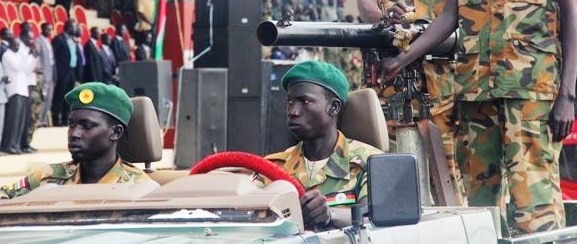Tomorrow’s SPLA Day celebrations have been moved from Dr John Garang's Mausoleum to Bilpham, the army headquarters, according to the military.
Lul Ruai Koang, spokesman of the South Sudanese army, told Radio Tamazuj Wednesday that the celebration that was postponed last week due to incomplete arrangements will take place on Thursday.
“We decided to move the celebration to the army headquarters in Bilpham because the president will inaugurate the new building of the ministry of defense,” he said.
“The celebration is for the military. We organize the celebration at the Dr. John Garang mausoleum so that citizens join the celebration, but we are inaugurating a new building at the army headquarters this year,” he added.
According to Lul, residents of Juba can follow the SPLA Day celebration through media outlets.” We have three levels of government, so state governments can also organize SPLA Day celebrations with citizens,” he said.
South Sudanese youth, apparently emboldened by the success of similar protests that ousted Sudan’s President Omar al-Bashir, called for anti-government protests in Juba on May 23.
The military spokesman noted that preparations had already been completed in the army headquarters where the SPLA Day celebration will take place on Thursday.
“We have invited people from neighboring countries. The celebration on Thursday will be wonderful,” he said.
Lul pointed out that the military leadership will award medals to some war veterans for their outstanding and distinguished military services during the days of the liberation.
The founding of the SPLA started the second civil war in Sudan, which continued for 21 years, killed over two million people and displaced millions but led to the independence of South Sudan as part of a peace deal signed in 2005.
On 16 May 1983, a group of soldiers from the Sudanese army’s 105 garrison in the Bor area mutinied. The mutiny was followed by 104 garrisons in Ayod, Akobo and Pachalla later.
John Garang, who had been dispatched by the army leadership to quell the new rebellion, joined the mutineers and became the leader of the SPLA movement until his death in 2005 after he signed a peace agreement with the Khartoum government in 2005.
On 9 July 2011 the SPLA became South Sudan’s army.




